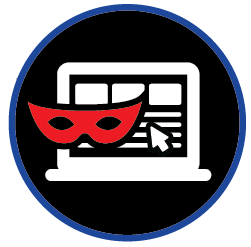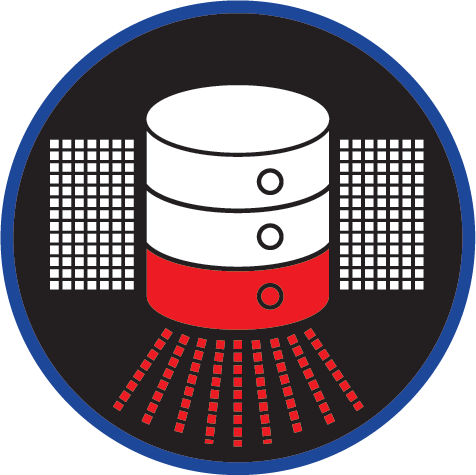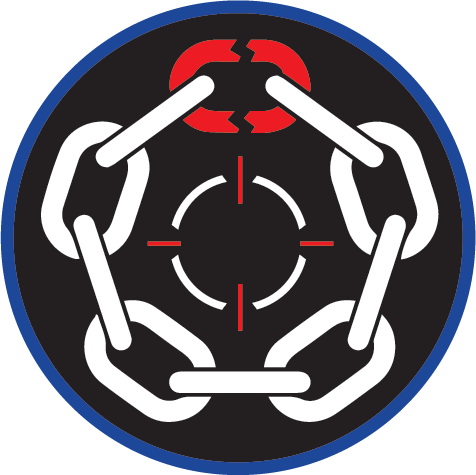
Empower Your Application Security with ThreatNG
ThreatNG complements your existing application security solutions by providing an external perspective and uncovering hidden risks that traditional tools might miss. Here's how ThreatNG enhances your application security efforts:
Gain a Comprehensive View of Your Application Attack Surface
Uncover Shadow IT and Subdomains: Discover unknown or forgotten subdomains that may host applications or services, expanding your security coverage beyond what's immediately visible. This complements your internal application inventory and vulnerability scanning efforts by ensuring no application is left unmonitored.
Example: Identify a forgotten subdomain hosting an older version of your application with known vulnerabilities, allowing you to prioritize patching and remediation efforts.
Detect and Analyze WAFs: Identify the presence and type of Web Application Firewalls (WAFs) protecting your applications. This information complements your WAF configuration and tuning efforts by providing an external view of its effectiveness and identifying potential bypass techniques.
Example: Discover that a specific WAF rule is not blocking a known attack pattern, allowing you to fine-tune the WAF configuration and improve its protection.
Ensure Secure Communication: Analyze TLS certificates for issues such as expiry, weak ciphers, or misconfigurations. This complements your secure development practices by ensuring that your applications use safe and up-to-date certificates, protecting sensitive data transmitted between the application and its users.
Example: Identify an expired certificate on a critical application subdomain, preventing potential service disruptions and security breaches.
Control Your Web Presence
Prevent Unintentional Exposure: Analyze robots.txt files to identify potentially sensitive directories or files excluded from search engine indexing. This complements your access control policies by ensuring that sensitive parts of your applications are not inadvertently exposed to unauthorized access.
Example: Discover that a development or staging environment is accidentally accessible through search engines, allowing you to restrict access and prevent potential security breaches.
Facilitate Vulnerability Disclosure: Discover and analyze security.txt files, which provide security-related contact information for reporting vulnerabilities. This complements your vulnerability management program by establishing clear communication channels for security researchers and ethical hackers to report potential application vulnerabilities.
Example: Ensure your security.txt file contains up-to-date contact information and vulnerability disclosure policies, streamlining the vulnerability reporting process and encouraging responsible disclosure.
Proactively Identify and Mitigate Application Security Risks
Assess External Attack Vectors: Evaluate the susceptibility of web applications to hijacking by analyzing externally accessible parts of the application, identifying potential entry points for attackers. This complements your internal vulnerability scanning and penetration testing efforts by providing an external perspective on application security.
Example: Identify a publicly accessible administrative interface missed during internal security assessments, allowing you to secure and prevent unauthorized access.
Prevent Subdomain Takeovers: Determine the susceptibility of subdomains to takeover attacks, helping you identify and mitigate potential vulnerabilities that could compromise applications or expose sensitive data. This complements your DNS security practices and helps prevent attackers from exploiting dangling DNS records to gain control of your subdomains.
Example: Identify a subdomain pointing to a decommissioned service, allowing you to remove the DNS record and prevent attackers from claiming it for malicious purposes.
Secure Your APIs: Enhance API discovery capabilities to identify and assess the security of APIs exposed by your applications. This complements your API security testing and management efforts by providing visibility into all your APIs and ensuring they are adequately secured.
Example: Discover an undocumented API endpoint with weak authentication, allowing you to implement proper security controls and prevent unauthorized access.
Detect and Remediate Code Leaks: Identify exposed public code repositories and pinpoint sensitive information such as access credentials, database exposures, and application data. This complements your secure coding practices and code review processes by identifying and remediating code leaks that could compromise application security.
Example: Discover a leaked API key in a public GitHub repository, allowing you to revoke the key and prevent unauthorized access to your API.
Assess Mobile App Security: Discover mobile apps in various marketplaces and analyze their contents for potential security risks. This complements your mobile application security testing efforts by providing an external view of your mobile app's security posture and identifying vulnerabilities that attackers could exploit.
Example: Identify a hardcoded password in a mobile app, allowing you to remove it and implement secure authentication mechanisms.
Monitor the Dark Web: Stay informed about mentions of your organization, associated ransomware events, and compromised credentials on the dark web. This complements your threat intelligence efforts by providing early warnings of potential threats to your applications and allowing you to take proactive measures to protect against them.
Example: Identify leaked credentials associated with your application accounts, allowing you to reset passwords and prevent unauthorized access.
By integrating ThreatNG into your application security program, you can better understand your attack surface, proactively identify and mitigate security risks, and strengthen your overall security posture.

Contact us to Evaluate
Experience the ThreatNG External Discovery, Assessment, Reporting, and Monitoring capabilities firsthand.

ThreatNG External Attack Surface Management (EASM) comprehensively investigates and analyzes your organization's digital exposure. Gain insight into all potential entry points for external threats, such as vulnerable systems, open ports, and exposed services. Continuously discover and assess your attack surface, ensuring no potential vulnerability goes unnoticed. Proactively identify and address security gaps, fortify defenses, and protect your digital assets from malicious actors.
Navigate the digital landscape while mitigating risks and maintaining a secure environment. ThreatNG Security's Digital Risk Protection (DRP) capabilities provide a comprehensive solution to safeguard your organization's digital assets from a wide range of risks. Continuously monitor digital presence to detect and mitigate threats like data breaches, brand impersonation, intellectual property theft, and more. Proactively identify and respond to potential risks, ensuring the integrity and confidentiality of your sensitive information.
Make data-driven decisions to enhance security and stay ahead of emerging threats. Advanced Security Ratings provide comprehensive scoring considering all external technology, strategic, operational, and financial risks. This holistic approach empowers organizations with a complete, objective, and contextual assessment of their security posture. The platform draws from the data provided by the ThreatNG Investigation Modules and Intelligence Repositories to generate actionable vulnerability and exposure scores.
Cloud and SaaS Exposure Management: ThreatNG extends its External Attack Surface Management (EASM), Digital Risk Protection, and Security Ratings to cover cloud platforms (Amazon Web Services, Microsoft Azure, and Google Cloud Platform) and SaaS applications. Discover and assess your Cloud and SaaS footprint, identify exposed open buckets, detect unsanctioned implementations (Shadow IT), and uncover brand impersonations (Cybersquats) without agents, credentials, API connections, browser plugins, or any prior knowledge. Discover and assess interconnected third-party applications, repositories, APIs, platform-as-a-service (PaaS), infrastructure-as-a-service (IaaS), and vendor technologies, further empowering organizations to enhance their security posture.
Third Party Risk Management: Quickly uncover, manage, and monitor third-party risks to fulfill due diligence, onboarding, and off-boarding requirements for Third Party Risk Management (TPRM). Enter a third party's domain name into the platform to discover, assess, report, and monitor their risks.
Brand Protection: ThreatNG identifies and prioritizes where your organization may be vulnerable to attacks, damage, or other negative impacts on reputation and business through the discovery and assessment of all digital brand assets: website, domains, subdomains, applications, cloud resources, SaaS applications, technology implemented, and social media accounts—your entire digital footprint.
Due Diligence: Perform practical, continuous, and consistent external assessments throughout the relationship lifecycle to help make informed decisions and protect against potential threats. Gain valuable information about any organization's external security posture and help identify potential risks or vulnerabilities.


Scores
ThreatNG Exposure
BEC and Phishing Susceptibility
Cyber Risk Exposure
Brand Damage Susceptibility
ESG Exposure
Breach and Ransomware Susceptibility
Web Application Hijack Susceptibility
Data Leak Susceptibility
Subdomain Takeover Susceptibility
Supply Chain and Third Party Exposure

Investigation Modules
-

Domain Intelligence
Domains, Subdomains, Certificates, Emails, DNS Enumeration, Domain Name Permutations More
-

Social Media
Live Monitoring of Twitter, Facebook, and Website Activity More
-

Sensitive Code Exposure
Publicly Available Developer Code Repositories, Passwords, Configuration Files, Keys. More
-

Search Engine Exploitation
Proactively Expose Information Indexed by Search Engines: IDs, Credentials, Infrastructure Data, and Sensitive Information. More
-

Cloud & SaaS Exposure
Discovery of Cloud Resources and SaaS applications (Protected, Open, Sanctioned, Unsanctioned, and Look-Alikes) More
-

Online Sharing Exposure
Publicly Available Information Repositories (Paste Sites) More
-

Sentiment and Financials
Alternative Organization Names, Public Filings, Funding Information, Lawsuits, Layoff Chatter, News Chatter (General and Negative) More
-

Archived Web Pages
Archived Subdomains, Potential Redirects, JavaScript endpoints, Files, Emails, Sensitive Information More
-

Dark Web
Safe Investigation of People, Places, and Things (Products, Services, Brands) More
-

Technology Stack
Technologies Used in Public Digital Footprint More


























